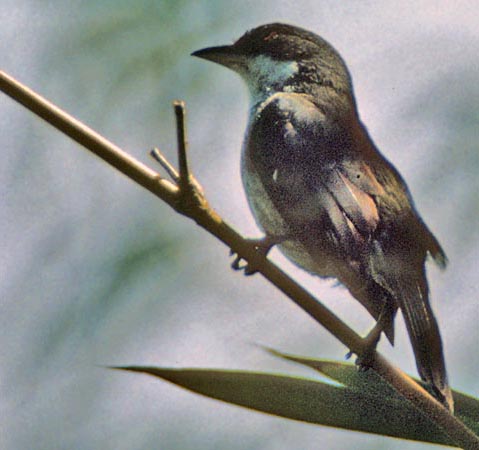
a web page by Don Roberson |
PUERTO RICAN TANAGER Nesospingidae |
|
The only member of this new Family is the Puerto Rican Tanager (left), a reasonably common species in mixed-species flocks in the humid Puerto Rican highlands. It rather looks and acts like a female spindalis but is assigned to its monotypic genus Nesospingus. Barker et al. (2013) proposing elevating it to its own family [Nesospingidae], and this was followed by Winkler et al. (2015), and eventually by Clements and IOC. As Nesospingus is sister to Spindalis within a single clade at the end of an evolutionary branch, per cladograms in Barker et al. (2013), so it is equally "right" to consider them in the same family as to split them. I had initially been conservative on this topic, but it seems all other current authorities are content to split this monotypic family. |
Despite the English names we use, these are not tanager. Yet most of them have been called "tanagers" in the past, and so we can continue to do so. We just need to recognize that there are many birds called "tanagers" that are now classified in other families — to use just one example, Scarlet, Summer, and Western Tanagers, familiar to North American birders, are actually in the cardinal/grosbeak family Cardinalidae. The Spindalis set and the Puerto Rican Tanager diverged about 10-12 million years ago and have been on independent paths since then; Barker et al. (2013). Given this quite young age of divergence — which applies to all the evolutionary lines among the Caribbean "tanagers" — I was initially reluctant to "over-split" them., stating that "he AOU will eventually decide this issue." The AOU (and other world list, such as Clements/eBird, has split this taxa as a family. Birders now "need" to see it to acquire "all the families," so I adopt it here. |
Photos: The Puerto Rican Tanager Nesospingus speculiferus was at Bosque Nacional El Yunque, Puerto Rico, in March 2000. Bibliographic note: There is no "family book" per se. The species in this set have been previously covered in books on tanagers, such as Isler & Isler (1987), or the applicable chapter on "tanagers" in the Handbook of the Birds of the World series. Literature cited:
|
 An
extensive analysis of the relationships of nine-primaried passerines
(tanagers, New World warblers, sparrows, buntings, etc.) by Barker et
al. (2013) found firm evidence of evolutionary sets of "tanagers" that
arose on islands in the Caribbean. Indeed, those authors even went so
far as to propose four new families from this radiation [Spindalidae,
Nesospingidae, Phaenicophilidae, Calyptophilidae].
An
extensive analysis of the relationships of nine-primaried passerines
(tanagers, New World warblers, sparrows, buntings, etc.) by Barker et
al. (2013) found firm evidence of evolutionary sets of "tanagers" that
arose on islands in the Caribbean. Indeed, those authors even went so
far as to propose four new families from this radiation [Spindalidae,
Nesospingidae, Phaenicophilidae, Calyptophilidae].